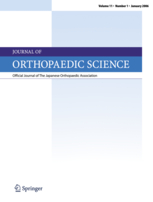
Trauma
Percutaneous compression plate vs proximal femoral nail for intertrochanteric fracture
J Orthop Sci. 2013 Nov;18(6):977-8690 elderly patients (>60 years of age) with intertrochanteric hip fractures underwent surgical implantation of a percutaneous compression plate (PCCP) or a proximal femoral nail anti-rotation (PFNA) device. The purpose was to evaluate the clinical and functional outcomes resulting from the differing treatment approaches. The PCCP resulted in reduced blood loss and shorter operation times compared to the PFNA device. However, by final follow-up (~16.9 months) pain, Oxford Hip Scores, Harris Hip Scores, hip flexion and walking ability were all comparable between groups.
Unlock the full article
Get unlimited access to OrthoEvidence with a free trial
Start TrialCritical appraisals of the latest, high-impact randomized controlled trials and systematic reviews in orthopaedics
Access to OrthoEvidence podcast content, including collaborations with the Journal of Bone and Joint Surgery, interviews with internationally recognized surgeons, and roundtable discussions on orthopaedic news and topics
Subscription to The Pulse, a twice-weekly evidence-based newsletter designed to help you make better clinical decisions
Exclusive access to original content articles, including in-house systematic reviews, and articles on health research methods and hot orthopaedic topics
Or continue reading this full article
Register Now

Subscribe to "The Pulse"
Evidence-Based Orthopaedics direct to your inbox.




































